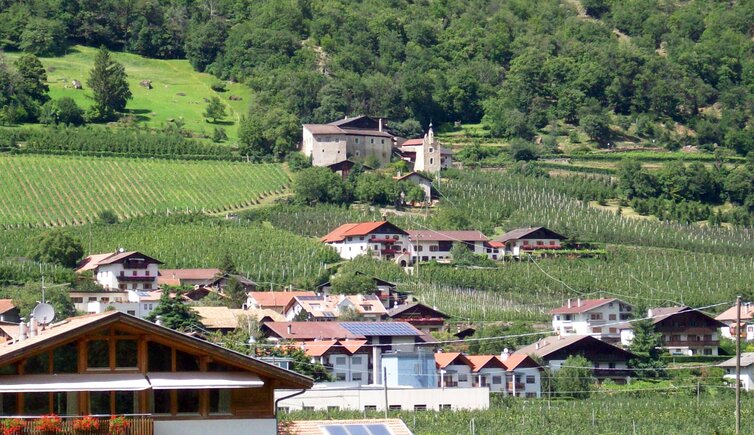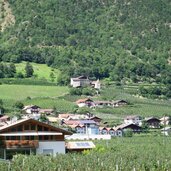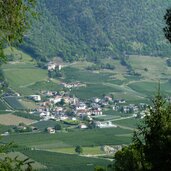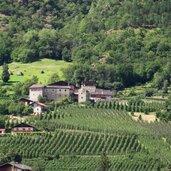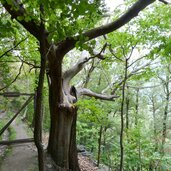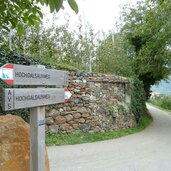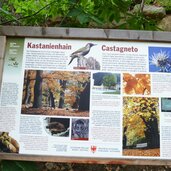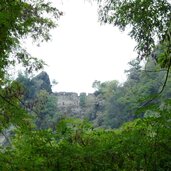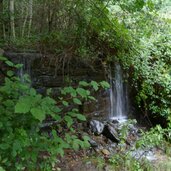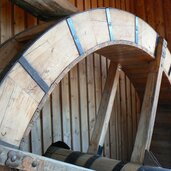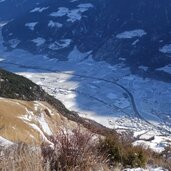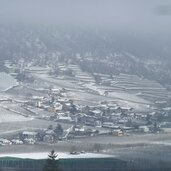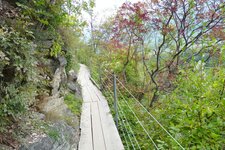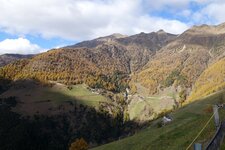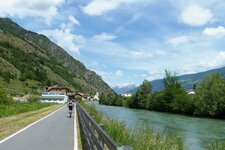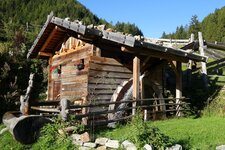The water mills and dry stone walls are cultural particularities in the small village of Colsano on the Val Venosta Monte Sole
Image gallery: Colsano
What has Colsano (Galsaun) got in common with Sicily? The rain! Both regions have the same low amount of rainfall, which favours a southern climate and the flourishing of kiwis, figs and palms here in the Val Venosta valley. Colsano is embraced by the two main villages of the municipality, Castelbello and Ciardes, and has no church of its own, only the Chapel of the Holy Trinity.
Characteristic for the locality are the dry stone walls, partly built from the stones that once made up the Via Claudia Augusta. This Roman road connected the Danube with the Adriatic Sea and led right through the Val Venosta: Today, the Val Venosta Cycle Path follows this old route flatly and comfortably shaded along the banks of the Adige River. The traces of settlement history go back to prehistoric times, as the archaeological finds at the "Kirchknott" above the village tell about.
The Rio di Colsano, the Rio dei Gamberi and the Adige River flow through the landscape, so there are also several restored mills here where grain used to be ground. Above the village towers the Colsano Alta Castle ruin from the 13th century, which was destroyed after only 150 years. This also includes the historic Kasten Residence in Colsano, which served as the residence of the Lords of Monte di Silandro after the destruction of the castle. The Waalweg path from Colsano leads nearby through the landscape of the Monte Sole in the Val Venosta with its chestnut groves.
